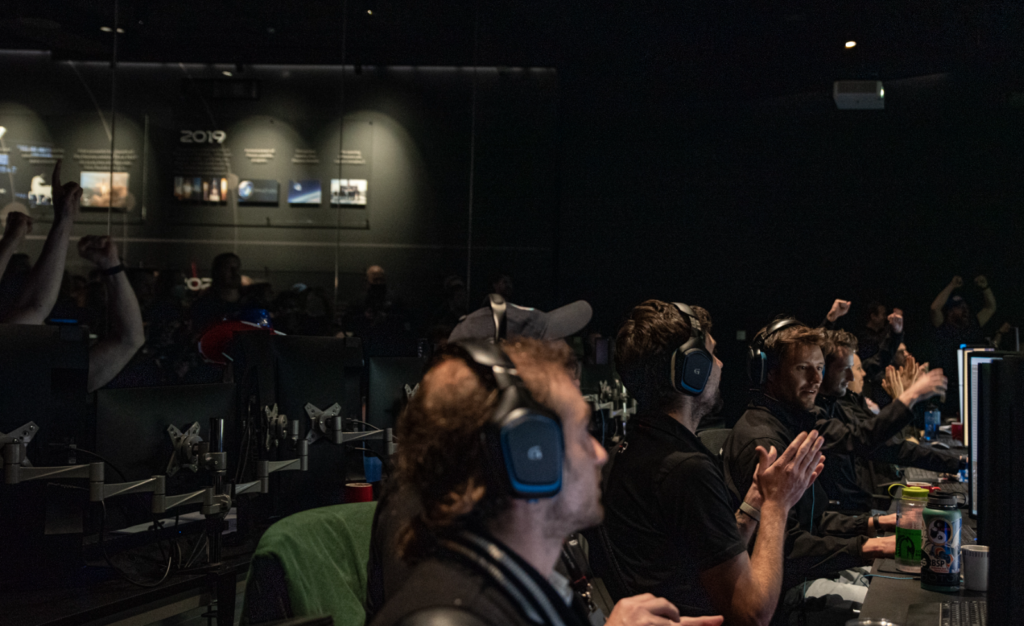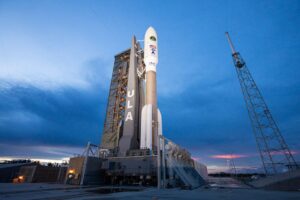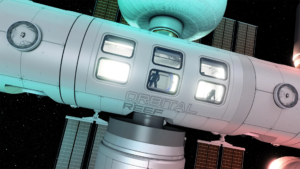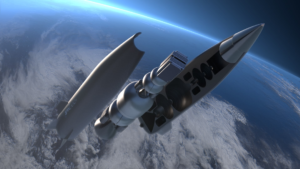
Rocket Lab’s Mission To The Moon Has Been A Success
At over 200,000 miles away, the Moon is an immensely difficult goal for satellites and other equipment alike. Few agencies around the world have managed to successfully reach this celestial body. That being said, over the past few weeks Rocket Lab has been busy using both Electron and a Lunar Photon to reach the Moon. After a long journey and a lot of preparation, Rocket Lab’s portion of the mission is officially done.
Yesterday Rocket Lab announced both a final successful engine burn of Photon along with a clean separation from the CAPSTONE payload. This marks a massive milestone for the company and proves the capabilities of both Electron and Photon. Throughout yesterday’s operations, Rocket Lab and CEO Peter Beck provided updates and thoughts on what was happening.
All of which put into perspective what this mission success means and how it applies to Rocket Lab’s future plans and missions. Here I will go more in-depth into the notable achievements the company made yesterday, additional important updates, what to expect in the coming months from Rocket Lab, Peter Beck, and more.
Recent Updates

Since the initial launch of CAPSTONE only one week ago, Rocket Lab has been providing updates on the exact progress of the mission. Starting on July 3rd, Rocket Lab tweeted saying, “Almost T-12 hours until Lunar Photon’s HyperCurie engine burns a final time, setting #CAPSTONE on course to the Moon for @NASA and @AdvancedSpace. We’ll be webcasting live from Mission Control.” Later that day, they continued on by mentioning, “In a little over two hours, Lunar Photon’s HyperCurie engine will conduct a final burn to raise #CAPSTONE’s apogee from 70,000 km to 1.2 million km from Earth, setting it on an energy efficient path to the Moon for @NASA. Burn scheduled for 06:56 UTC.” Finally, after the long wait and preparation, Rocket Lab tweeted on July 4th highlighting, “MISSION SUCCESS! The final HyperCurie engine is complete and #CAPSTONE has separated from Lunar Photon to begin its solo journey to the Moon for @NASA to test a never-before-flown orbit.”
CEO Peter Beck soon chipped in and said, “Feels like something epic should be said but all as I can say is, perfect moon mission success.” In addition, NASA went more in-depth and pointed out, “MISSION UPDATE: Separation success! Our #CAPSTONE spacecraft has released from @RocketLab’s Photon upper stage and started its solo journey to the Moon. The pathfinder is scheduled to arrive at its lunar orbit on Nov. 13th.” Finally, one of the last tweets regarding this mission highlighted that, “#CAPSTONE was our first deep space Photon mission, but many more will follow in its footsteps. Photon missions to Mars and Venus are already in the works!”
Not only did Rocket Lab provide updates on Twitter, but the company also released a more in-depth mission overview after the final burn and separation of the payload. This pointed out that on July 4th, Rocket Lab successfully deployed a pathfinding satellite for NASA, setting it on a course to the Moon. The deployment marks the successful completion of Rocket Lab’s first deep space mission, paving the way for the Company’s upcoming interplanetary missions to Mars and Venus. “The CAPSTONE mission marks the beginning of humanity’s return to the Moon through NASA’s Artemis program and we’re incredibly proud that Rocket Lab has played a key role in that,” said Rocket Lab founder and CEO, Peter Beck. “The Rocket Lab team has been working on CAPSTONE with NASA and our mission partners for more than two years, developing new small satellite technology in the form of the Lunar Photon spacecraft to make this mission possible, so it’s an incredible feeling after all that hard work and innovation to achieve mission success and set CAPSTONE on a course for the Moon. This has been Rocket Lab’s most complex mission to date and our team has been incredible. We pushed Electron and Photon to their limits and proved it’s possible to do big missions with small spacecraft. Now we’ll be applying this ground-breaking technology for more interplanetary journeys, including our upcoming missions to Venus and Mars.”
CAPSTONE & Future Missions

Now that we know more about the mission’s success and most recent updates, we can take a closer look at the final steps for CAPSTONE and Rocket Lab’s interplanetary missions. Owned and operated by Advanced Space on behalf of NASA, the Cislunar Autonomous Positioning System Technology Operations and Navigation Experiment (CAPSTONE) will be the first spacecraft to test the Near Rectilinear Halo Orbit (NRHO) around the Moon. This is the same orbit intended for NASA’s Gateway, a Moon-orbiting outpost that will provide essential support for long-term astronaut lunar missions as part of the Artemis program.
Rocket Lab’s role in the mission took place over two phases. First, CAPSTONE was successfully launched to low Earth orbit by Rocket Lab’s Electron launch vehicle on June 28th. From there, Rocket Lab’s Lunar Photon spacecraft provided in-space transportation, power, and communications to CAPSTONE. After six days of orbit-raising burns by Lunar Photon’s 3D printed HyperCurie engine, CAPSTONE was deployed on its ballistic lunar transfer trajectory to the Moon as planned at 07:18 UTC on July 4th. The mission was Rocket Lab’s fourth Electron launch this year, demonstrating the rocket’s continued reliability. In addition to providing the launch, Rocket Lab designed, manufactured, and operated the Lunar Photon spacecraft, successfully completing a highly complex deep space mission and demonstrating Rocket Lab’s growing capabilities as an end-to-end space company. With Rocket Lab’s role in the mission now complete, CAPSTONE’s solo journey to the Moon has begun. CAPSTONE will use its own propulsion and the Sun’s gravity to navigate the rest of the way to the Moon, a four-month journey that will have CAPSTONE arriving to its lunar orbit on November 13th, 2022. The gravity-driven track will dramatically reduce the amount of fuel the CubeSat needs to get to the Moon. Advanced Space and Terran Orbital will manage the operation of the CAPSTONE satellite for the duration of its orbital lifespan.
The CAPSTONE mission was Rocket Lab’s 27th Electron launch overall, but it featured several significant technological firsts for the Company, including the first deep space mission. First use of Lunar Photon, a high energy variant of the Rocket Lab-designed and built Photon spacecraft. Rocket Lab previously launched and continues to operate two low Earth orbit variants of the Photon spacecraft. First collaborative mission between Rocket Lab and Advanced Solutions Inc, a Colorado-based flight-software company acquired by Rocket Lab in late 2021. First time using the FR-lite satellite radio which Rocket Lab has an exclusive license agreement with Johns Hopkins University Applied Physics Laboratory to manufacture, and more.
One of the exciting upcoming interplanetary missions is to Mars. Specifically, In 2021 Rocket Lab was awarded a subcontract by the University of California Berkeley Space Sciences Laboratory, to design two Photon spacecraft for a scientific mission to Mars. The Escape and Plasma Acceleration and Dynamics Explorers (ESCAPADE) mission, led by Rob Lillis at UCBSSL, is a twin-spacecraft science mission that will orbit two spacecraft around Mars to understand the structure, composition, variability, and dynamics of Mars’ unique hybrid magnetosphere. The mission will leverage its unique dual viewpoint on the Mars environment to explore how the solar wind strips atmosphere away from Mars to better understand how its climate has changed over time. ESCAPADE is being developed under NASA’s Small Innovative Missions for Planetary Exploration (SIMPLEx) program in the Science Mission Directorate (SMD). The mission is led by UCBSSL with spacecraft design provided by Rocket Lab. The two spacecraft are planned for launch in 2024 to Mars ridesharing aboard a NASA-provided commercial launch vehicle.
The other upcoming interplanetary mission has the destination of Venus. In September 2020, scientists at MIT and Cardiff University announced they had observed what may be signs of life in the clouds of our planetary neighbor, Venus. Their observations indicated the potential presence of phosphine, a gas typically produced by living organisms. In 2023, Rocket Lab is sending the first private mission to Venus to help gather further evidence. The goal, using an Electron launch vehicle and Photon spacecraft, is to send a probe to around 30 miles’ altitude, where Venus’ atmospheric conditions are closer to those found on Earth. Research suggests Venus was once a habitable planet similar to Earth. These are just some of the missions to look forward to for Rocket Lab.
Conclusion
Rocket Lab has been working on the CAPSTONE mission for a very long time. Finally, in early July the company successfully completed its part in the mission after Photon ignited one last time and separated from CAPSTONE. This is a very big deal for the company and its future plans to reach Mars, Venus, and beyond. We will have to wait and see how it progresses and the impact it has on the space industry.



